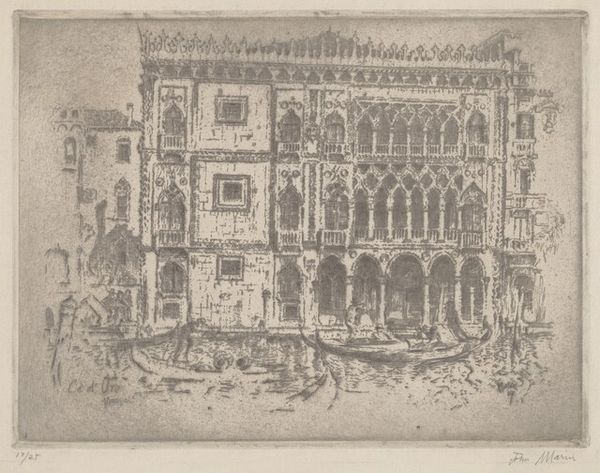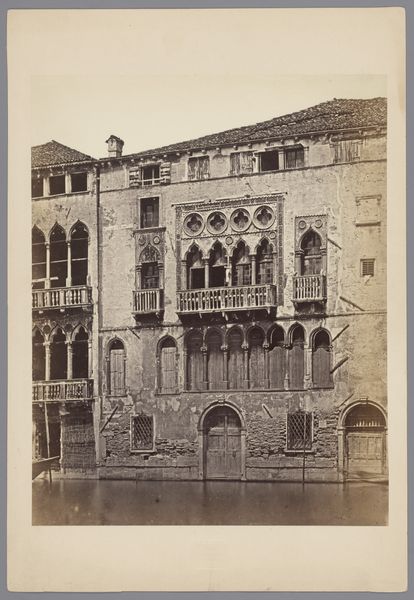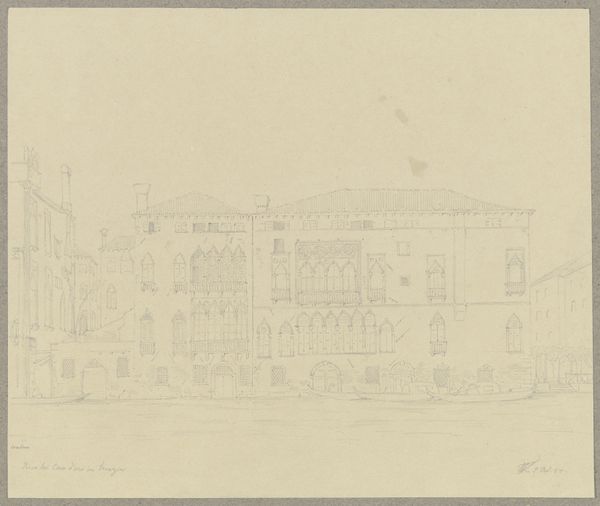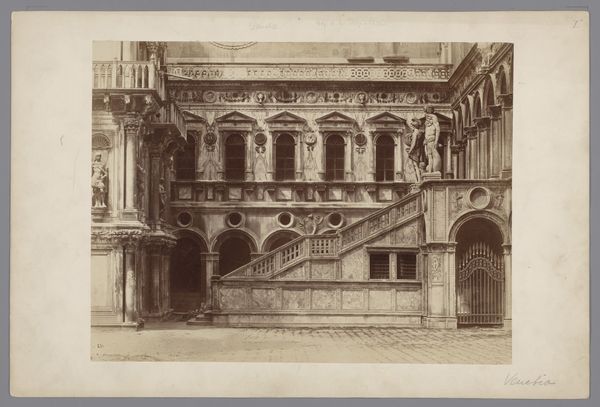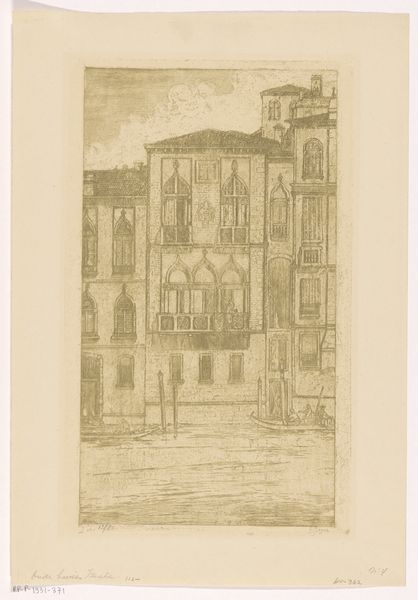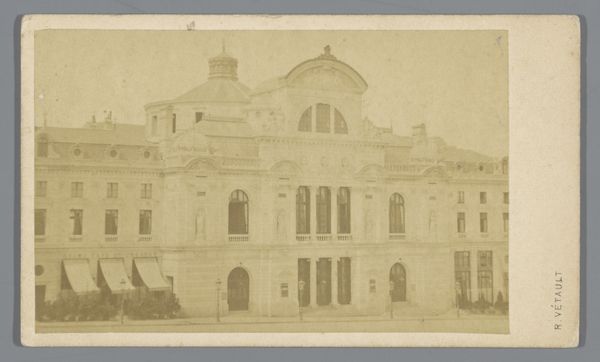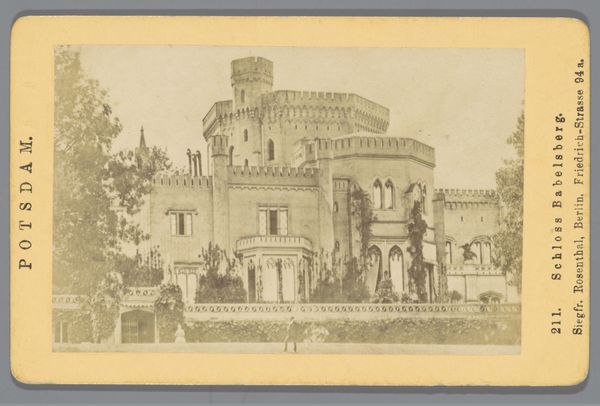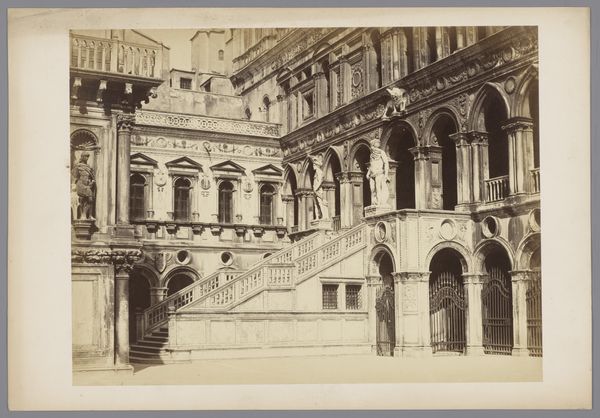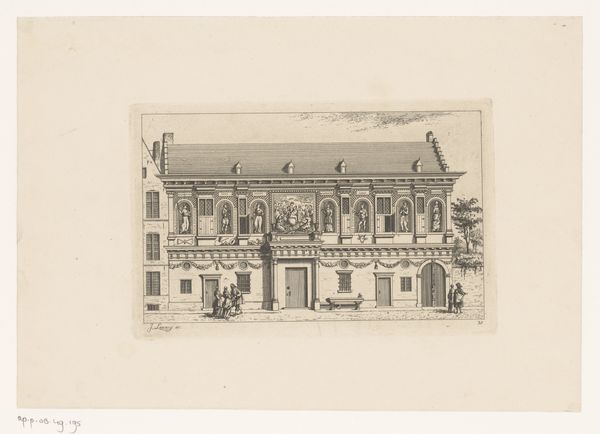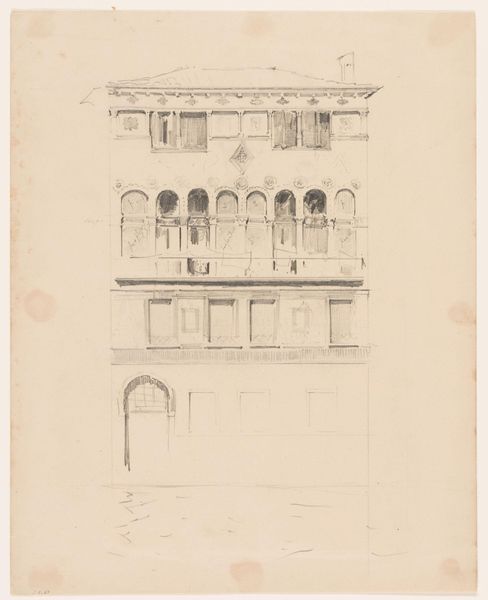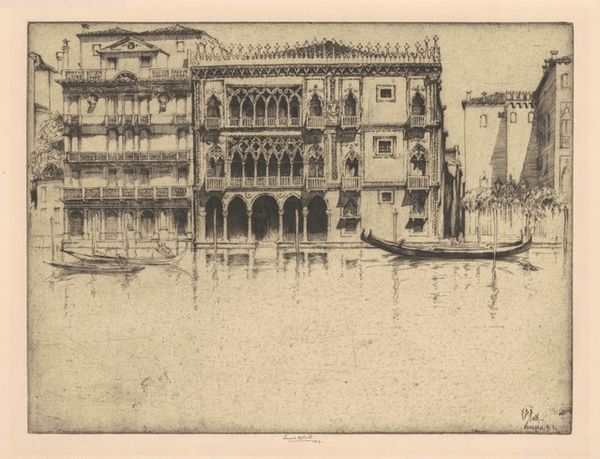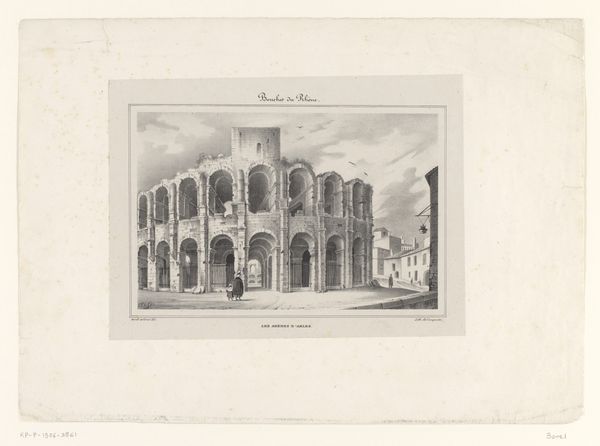
Dimensions: height 340 mm, width 457 mm
Copyright: Rijks Museum: Open Domain
Curator: This is a print, an etching entitled "Ca' d'Oro in Venetië," made sometime between 1873 and 1931 by Etienne Bosch. Editor: It’s ghostly, isn’t it? Like a Venice imagined from memory. A faded dream clinging to paper. So delicately etched; it looks almost woven, more like antique lace than cold stone. Curator: Indeed, Bosch’s choice of etching is crucial here. The labor-intensive process—the acid biting into the metal plate, the controlled lines defining form—it mirrors the careful crafting of Venice itself. The city is built, not just constructed, but *built* through immense effort. Editor: The repetition of arches; echoing the rhythm of the water—the gondolas below mirror the loggia above. It's all held together with such fragile, ephemeral marks; an architecture built of water and light, captured by these delicate lines that might wash away any minute. Curator: The Ca’ d’Oro, a palazzo famous for its intricate facade once adorned with gold leaf, now appears muted. Consider this: prints allowed for wider circulation and potentially wider appreciation—making art accessible to a broader audience that otherwise had limited access. Editor: That detail up on the roof, what is that? A frieze of statues? It's slightly absurd, like something from a fairytale, which adds a sense of romantic fantasy. It feels very evocative to try and remember Venice from the vague traces we preserve about the city’s grand history. Curator: Precisely, Bosch uses this architectural fragment to consider themes of preservation and memory, as well as commerce, and questions how Venice and Venetian history would appeal to the modern subject of this etching's era. Editor: It's beautiful, though! Looking at the history as labor, a way to experience the depth and the craft. Makes one want to see the city slowly, in its element.
Comments
No comments
Be the first to comment and join the conversation on the ultimate creative platform.
